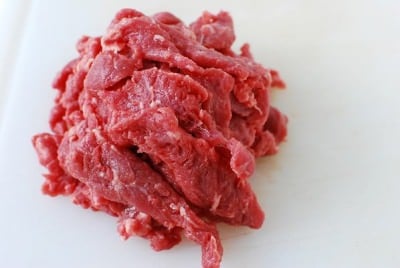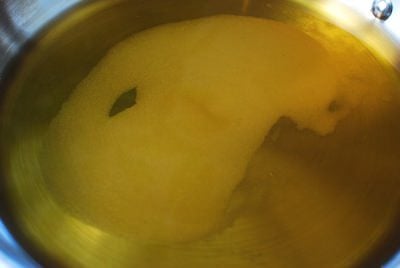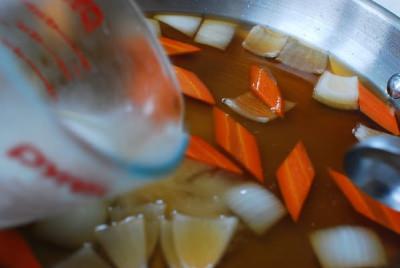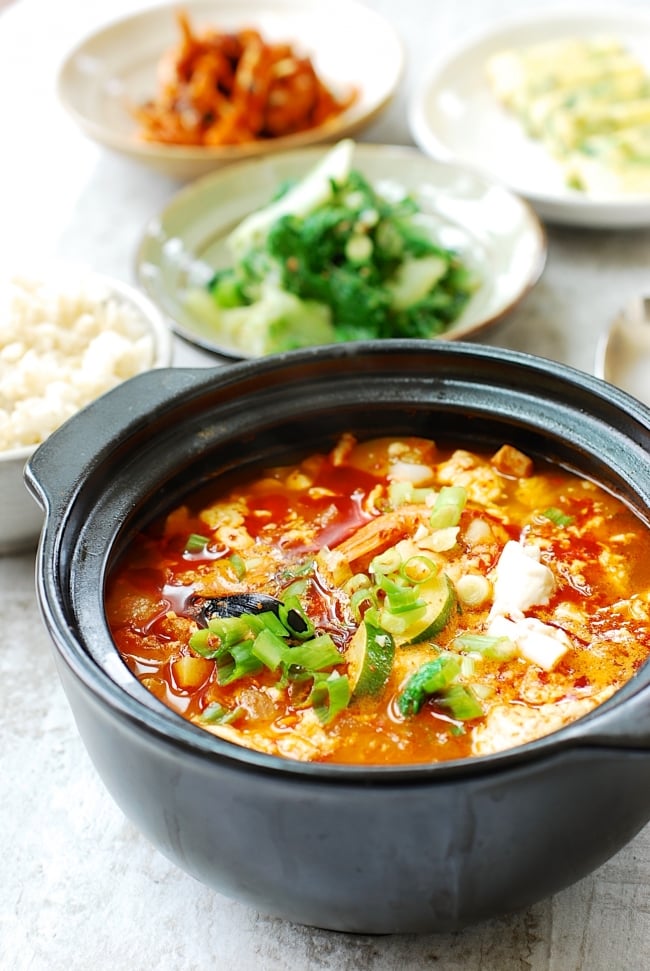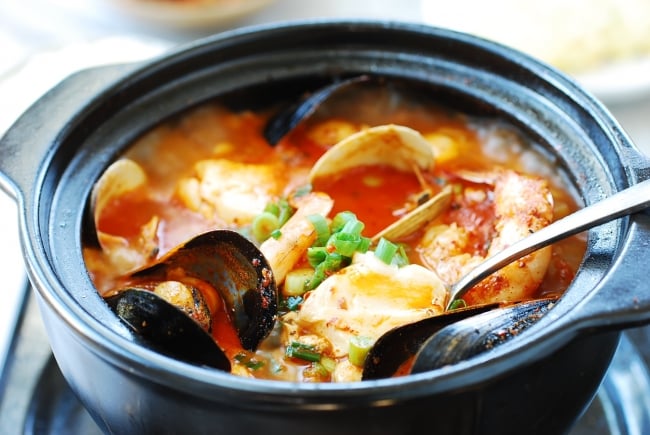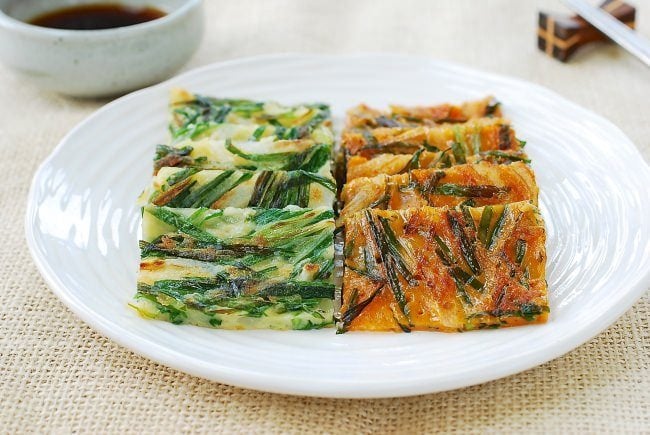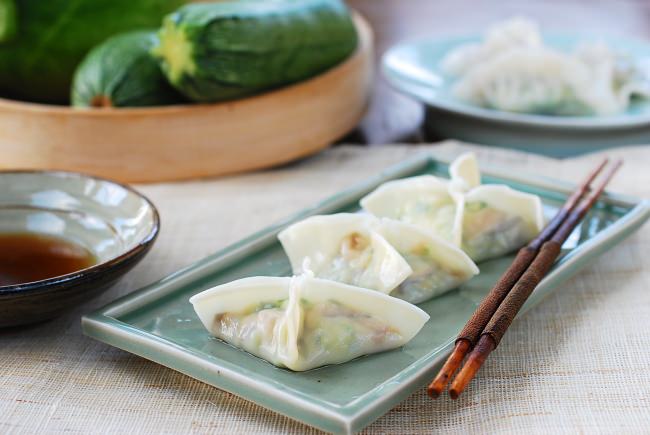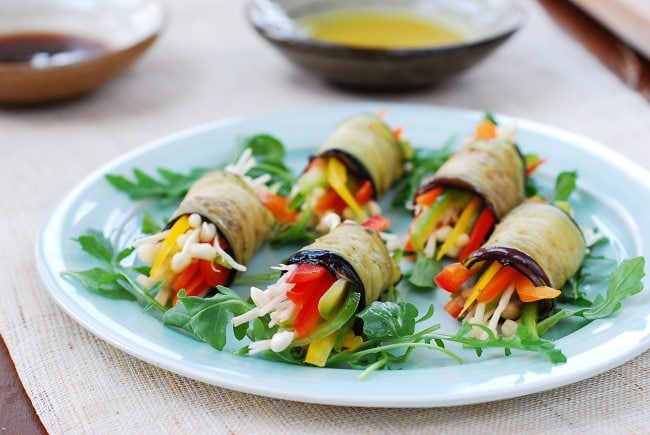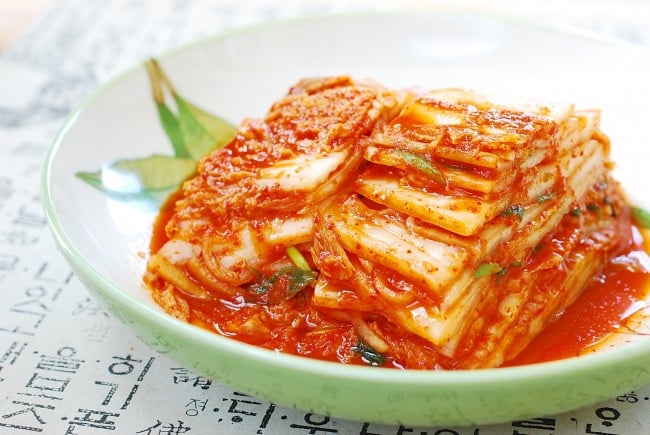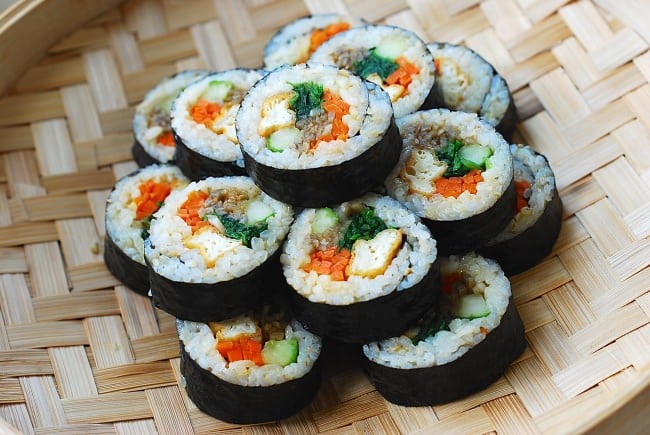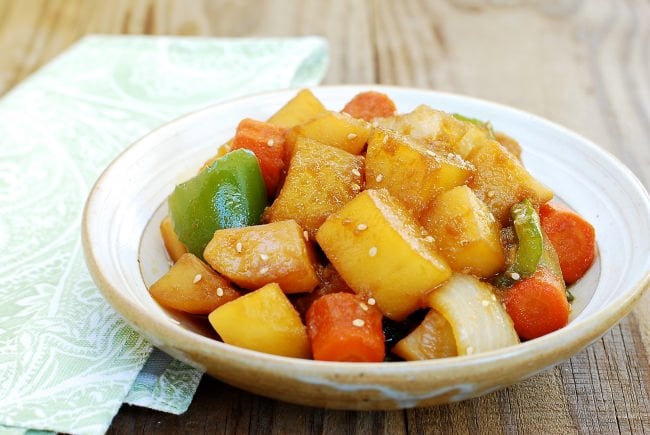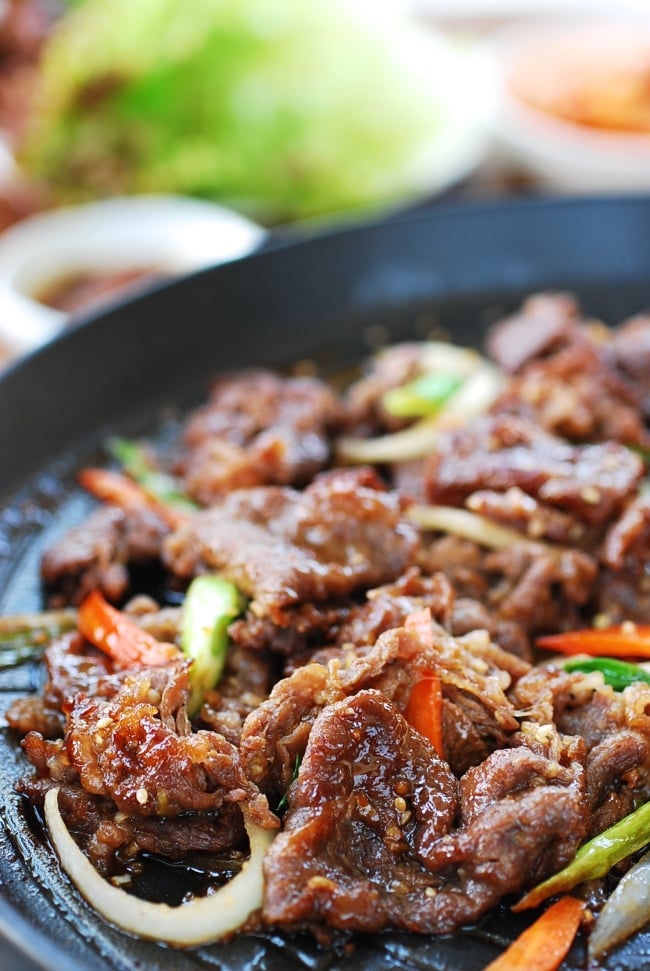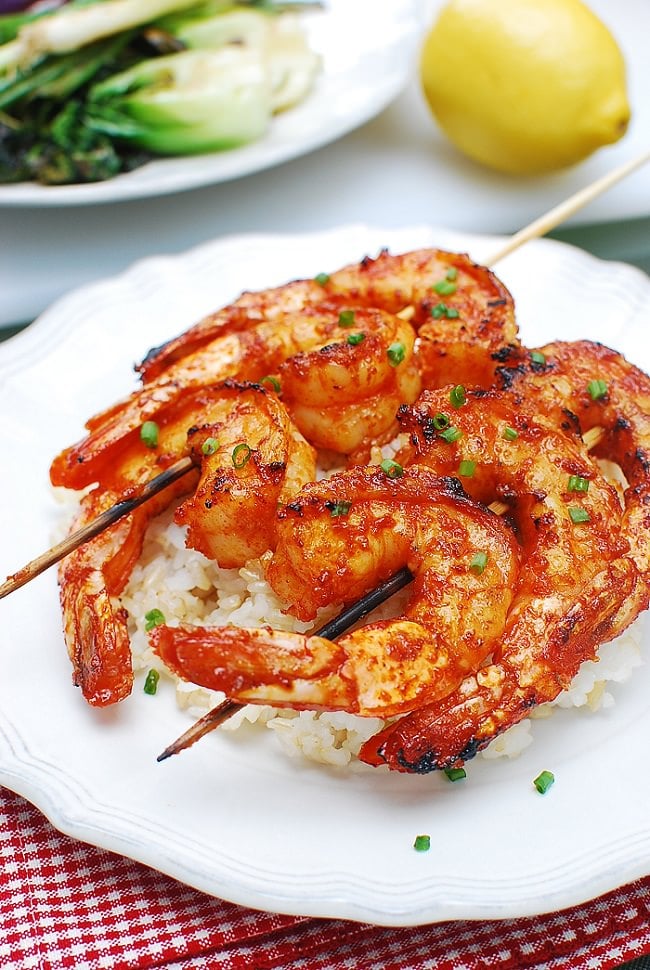
Tangsuyuk (탕수육) is crispy deep-fried pork (or beef) in a delightfully sweet and tangy sauce! It’s Chinese sweet and sour pork (or beef) dish adapted for Korean taste. Tangsuyuk (also spelled tangsooyuk) is another beloved Korean-Chinese dish along with the two noodle dishes – jajangmyeon and jjamppong.
Every time my family goes out to a Korean-Chinese restaurant, we almost always order a large plate of tangsuyuk to share as an appetizer. At home, I often make this dish for special occasions or gatherings, especially when my extended family gets together. Everyone loves it!
Tangsuyuk is easy to make, but the process goes very quickly. So, have all your kitchen equipment and ingredients ready before starting to cook. This tangsuyuk recipe was originally posted in September 2011. I’ve updated it here with new photos, more information, and an improved recipe.
Tangsuyuk meat
Growing up, my mother usually made this dish with pork. I usually do the same thing except when my sister-in-law who does not eat pork will be coming. You can use any meat of your choice for this recipe.
For a vegan tangsuyuk, try rehydrated dried shiitake mushrooms. They are meaty, chewy, and packed with earthy flavor.

How to make tangsuyuk batter
You’ll need to pre-soak the potato starch used to make the batter for about an hour or two. This is a traditional method used to create a slightly chewy yet crispy crust. It is important to deep-fry the meat twice for extra crispiness.
How to make tangsuyuk sauce
The key to a successful tangsuyuk sauce is the balance between the sweetness and sourness. This tangsuyuk recipe produces a well-balanced sauce, but you can always adjust to your taste.
The vegetables add different textures and a colorful touch to the dish. In this updated recipe, I used carrot, onion, cucumbers, and wood ear mushrooms. Red and green peppers and green peas are also good options. You can also add some fruits, such as pineapple or apple slices.
Some people like to have the sauce on the side and dip the meat in the sauce as they eat. I prefer the sauce poured over the meat. One of my readers once called the former a “dipper” and the latter a “pourer”. Which one are you?


Have you tried this tangsuyuk recipe? Please rate the recipe below by either clicking the stars or leaving a comment! And make sure to share your creations by tagging me on Instagram! Stay in touch by following me on Pinterest, Twitter, Facebook, and Instagram.
Tangsuyuk (Sweet and sour beef or pork)

A Korean-Chinese style sweet and sour pork or beef
- 10 ounces pork or beef (pork loin or beef sirloin)
- salt and pepper
- 1/2 teaspoon grated ginger
Batter
- 1 cup potato starch (or corn starch, soaked in 1 cup of water for 2 to 3 hours)
- 2 tablespoons lightly beaten egg
- 1 tablespoon canola oil
- 4 cups canola or vegetable oil for deep frying
Vegetables
- 1/2 small carrot (cut into thin bite size slices)
- 1/4 small onion (cut into bite size chunks)
- 1/2 small cucumber (cut into thin bite sized slices)
- 1 ounce wood ear mushrooms – optional (cut into bit sized pieces)
Sauce
- 1 cup water
- 1 tablespoon soy sauce
- 4 tablespoons sugar
- 2 tablespoons vinegar (or to taste)
- pinch salt
- Starch slurry – 2 tablespoons starch* in 4 tablespoons water
Dipping sauce
- 1 tablespoon soy sauce
- 1 tablespoon water
- 1 teaspoon vinegar
- pinch black pepper
- pinch red chili pepper flakes (gochugaru)
-
At least an hour before cooking this dish, combine 1 cup of the starch with 1 cup of water and refrigerate until ready to use. The starch and water will separate, and you will need to pour out the water on top to use the soaked starch at the bottom.
- Cut the beef (or pork) into 2 to 2.5-inch long strips (about 3/4-inch wide and 1/8-inch thick). Lightly sprinkle with salt and pepper. Let it sit until ready to deep fry.
![tangsuyuk beef]()
- Prepare the vegetables by cutting into thin bite size pieces.
![]()
- In a pan, add 1 cup of water along with the remaining sauce ingredients except the starch slurry. Boil just until the sugar melts and turn off the heat. You will finish the sauce when the meat has been deep fried.
![tangsuyuk]()
- Carefully pour out the soaking water from the starch. Use your hand to mix the soaked starch with the egg and oil. The starch will be very stiff. The addition of oil will help loosen it a little.
![]()
- Coat the meat with the starch batter.
![tangsuyuk]()
-
Add 4 cups of oil to a deep fryer, wok or large pot. Heat over high heat to 350°F. Using metal tongs or chopsticks, drop the meat in the oil one piece at a time. Do not crowd the oil. Cook until golden brown, about 3 minutes, in two or three batches, reheating the oil to 350°F between the batches.
![]()
- Remove them with a wire skimmer or a slotted spoon. Drain on a wire rack or in a large mesh strainer set on a bowl.
![]()
-
Reheat the oil to 350°F. Add the meat (you can do this in one batch for the second frying) and deep fry again for 2 to 3 minute. Drain on a wire rack or in a large mesh strainer set on a bowl.
- Bring the sauce to a boil again. Add the carrot and onion pieces, which take longer to cook. When the sauce boils, add the starch slurry, stirring well. Taste the sauce and add a little more sugar or vinegar if desired. Turn the heat off, and then add the green pepper and pineapple pieces. The green vegetables, such as cucumber, lose their color quickly if boiled in the sauce.
![tangsuyuk sauce]()
-
Place the meat on a large serving plate and pour the sauce on top or serve the sauce on the side. Serve immediately with a dipping sauce.
The post Tangsuyuk (Sweet and Sour Beef or Pork) appeared first on Korean Bapsang.
